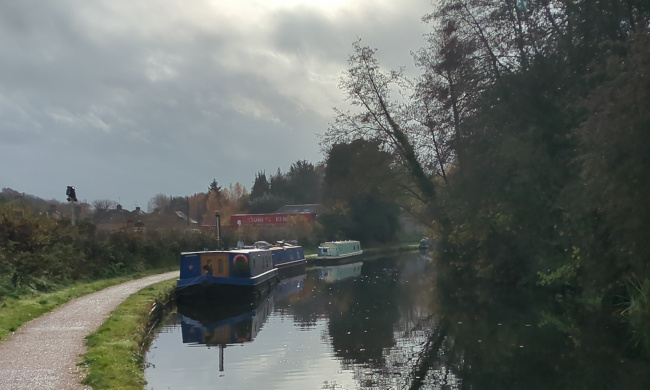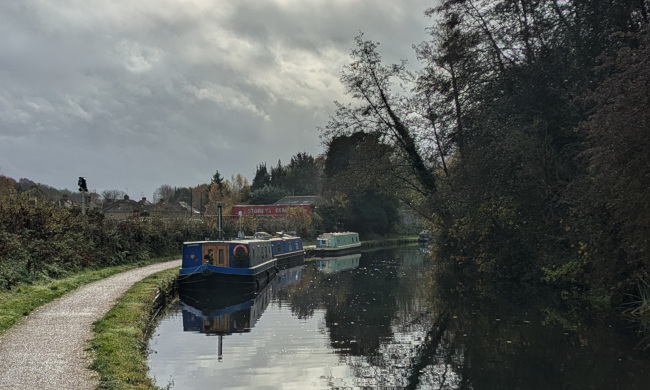Running the Google Pixel Camera app on a robustly de-Googled cellphone

I noticed something odd when I de-Googled and started running Lineage OS on my Samsung phones: photographs were not as clear or well-exposed as those from the stock Samsung camera app. I didn’t know why, and I still don’t – the image data comes from the same sensor and lens. Nevertheless, the software I used to take photographs was reflected in the quality of the images.
When I installed Graphene OS on my Pixel 7, I expected to see the same thing – I was prepared for the photo quality to be less good with the Graphene open-source camera than the stock Google Camera app (now called Pixel Camera). It turns out I was right, well, kind-of: as the JPEG images come straight out of the camera, the results with the stock, Google firmware were clearly nicer than with Graphene (I’ll show an example later).
Pixel phones are noted for their cameras, and I wanted to know whether the differences I saw were related to the choice of camera app, or to something else. So I wondered how easy it would be to run the Google Pixel Camera app on my Graphene-equipped phone.
The first question was whether the Pixel Camera app would work at all without Google Play Services, and with restricted permissions, to improve its privacy.
Many apps depend on Google Play Services, which is a notorious siphon of private data. Open-source Android implementations take different approaches to dealing with this problem, because nobody with a concern for privacy really want to run Google Play Services. /e/OS, for example, is supplied with MicroG, a privacy-sparing stub implementation of Google Play Services. Lineage OS has no such provision by default, but there’s a well-documented way to install MicroG on Lineage if required. Graphene takes a completely different approach: it can run the ‘real’ Google Play Services in a sandbox wrapper, so it behaves like an unprivileged app. In this way, Play Services can be denied the permissions that make it a privacy hazard.
I express no opinion on which of these approaches is best, since I use none of them. I prefer to install only software that does not require Google’s infrastructure at all. That’s potentially a problem for Pixel Camera which is, of course, a Google proprietary app.
So I’m pleased to report that, at the time of writing (November 2025) the latest official Pixel Camera app does not require Google Play Services. In addition, it can have its network and location permissions withdrawn, and it still works fine. Without network permission, I don’t really see any way for it to leak private data, even if it were inclined to. Google says that Pixel Camera does not collect or transmit any private data anyway; but I’ve heard reports to the contrary, so it’s as well to take away any opportunity it might have.
If you’re running a handset without Google services, you probably won’t be able to get Pixel Camera from the Google Play store. Instead, you’ll have to hunt out an APK from a source you trust – APK Mirror might be a possibility. Obviously, you have to be careful about installing apps this way but, if you’re not using Google Play Services, and your app works with highly restricted permissions, it’s safer than it would be on a stock handset.
One annoying oddity about Pixel Camera is that it tries to display the photo it’s just taken using the Google Photos app. There’s no way (so far as I can see) to make it do anything else. Google Photos can also be run with its location and network permissions disabled, so I don’t see a huge privacy problem in installing it. I just don’t like it.
A solution to this problem is the Google Photos stub that was developed for CalyxOS. This is a minimal image viewer, but that’s all it needs to be. It has the same Android package name as Google Photos, so you can’t install both at the same time – but I guess there would never be a need to.
What about handsets that aren’t in the Google Pixel range? It’s questionable whether they will run the official Google Pixel Camera, with or without Google Play Services. There are a number of “ports” of Pixel Camera to non-Google handsets: there’s a list here. I tried a couple of these on my Samsung phones, but I didn’t find them very reliable. Whether the problem was that they needed Google Play Services, and I wasn’t willing to allow this, I’m not sure. There are many ports to try, but I lacked the patience.
On the Pixel 7, though, the stock Pixel Camera works fine for me. So is it worth installing it?
On the face of it, it looks as if it might be. The two photos below
are of the same scene, at the same time, captured with the two different
camera apps, with settings as near to identical as I can make them.
Because it’s hard to see the differences when the images are scaled down
to fit on this page,
here are the full-sized versions from the Graphene camera app and from Pixel Camera. In both cases I’ve
cropped the image from the centre of a larger scene, but I haven’t made
any other edits.


When I look at the images on the cellphone screen, there’s no obvious difference between them. Differences are really only apparent when looking at them on a large monitor, and particularly when I crop detail out of a larger scene.
The Pixel Camera version appears, on the face of it, to be in better focus across the whole scene. There’s a little more detail in the shadows, and the grass and gravel seem to have more texture. Also, it looks as if the highlights in the sky are a little less blown out in the Pixel Camera version.
But…
The increased texture in the grass and the gravel gives away what I think is going on here. It seems as if the Pixel Camera JPEG is subject to an unsharp mask and/or local constrast adjustment. A little time with Darktable can turn the Graphene camera image into the Pixel Camera image or, at least, pretty close.
So my feeling at present is that both camera apps are capturing the same data from the camera sensor, but applying different post-processing. I think the untouched JPEG images from Pixel Camera are nicer than those from the Graphene camera, in a whole range of scenes, but a bit of post-processing sorts that out. So far I haven’t found any scenes where the Pixel Camera app clearly outperforms Graphene’s camera, in a way that can’t be fixed. Of course, if you don’t want the hassle of editing your photos, the Pixel Camera app gives more immediately good results.
The Pixel Camera app also has some features that open-source camera apps lack, like panorama and motion blur. I have little use for these features but, of course, we’re all different. One thing that is of interest to me is that the Google app saves a raw data file in DNG format, while the Graphene camera does not. I don’t think it’s ‘real’ raw sensor data, of the kind that a proper digital camera would provide – it just looks too much like the regular JPEG images, with the same level of sharpening. In any event, there are other open-source camera apps that do save a ‘raw’ file, subject to similar limitations. Whether storing this kind of file is a real advantage is something I’ll need to take a lot more photos to assess.
In short, the latest Pixel Camera app worked fine on my Pixel 7 with Graphene, without Google infrastructure, and with its network and location permissions denied. Whether the hassle of finding and installing its enormous APK will be reflected in superior photography, only a lot more experience will tell.
One final point: all smartphone cameras suck, compared with a real DSLR camera operated by a skilled photographer. Even the tiniest of ‘serious’ cameras like Sony’s RX100 range – which are no bigger than a smartphone – take better pictures. Of course, your best photos are the ones you actually take, and I can’t deny the accessibility of a smartphone camera.
